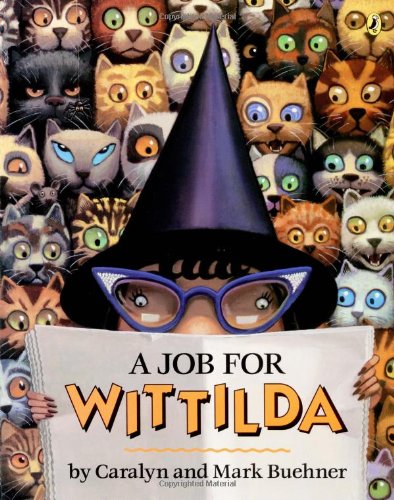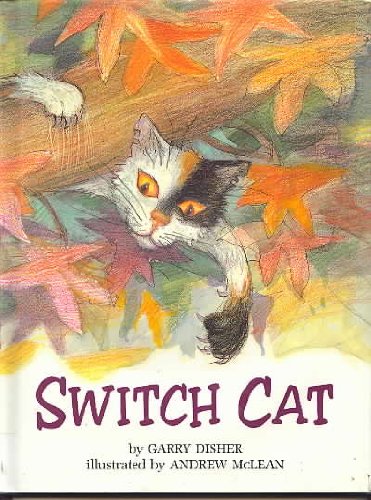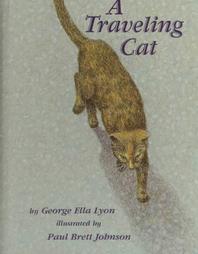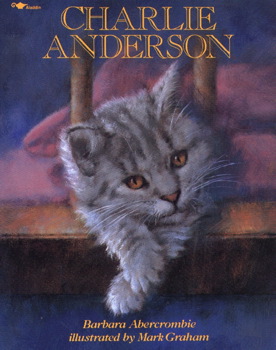
“There were cats on the table, cats on the chairs, cats on the sofa, the bookshelves, the stairs!” But unfortunately, poor Wittilda is out of food to feed her enormous collection of 47 cats. You’d think a witch would just magically whip up 47 bowls of cat food – but she tries a different approach. Wittilda heads out into the modern economy, and just tries to land herself a day job!
It’s funny that she has 47 cats, and it’s also funny to watch her adventures in the workforce. But “A Job for Wittilda” also gets some of its humor from the slick illustrations by artist Mark Buehner. There’s big-eyed cats, and they prowl through the witch’s cabinet, or perch in a long line across the back of her chair. And Wittilda herself wears jeweled horn-rimmed glasses – over a cutely-drawn bulbous nose.
But for a witch, she leads a surprisingly ordinary life. Wittilda gets a job at her aunt’s hairdresser’s shop. (Though she’s fired after weaving the woman’s hair into an enormous spider web pattern – and adding a real spider for extra effect.) She gets another chance to earn money for her pets, but this one is even more ordinary. Wittilda tries out for a job as a pizza delivery person.
There’s some rhymes on the first page, which set a lively tone. (Though I still think the cats were the most exciting thing about the book.) But the plot’s tension rises with a pizza delivering-showdown. If Wittilda can beat every one of the other delivery-boy candidates, she’ll finally be able to earn the cats’ dinner money. And fortunately, she’s got a secret weapon. She can deliver them on a broom that flies…
It’s one of the first children’s picture books by Mark Buehner’s wife Caralyn, and it was finished shortly after “Escape of Marvin the Ape.” And it seems like Mark is trying extra hard to make the book entertaining, while also appealing to fans of the earlier book. “Eagle-eyed young readers will also find a bonus of laughter in the antics of the alert little mouse and the cheerful spider in each picture,” notes the book’s jacket, “as well as other animals (including Marvin, who makes a cameo appearance) hidden in the cloud and elsewhere.” This book is called “A Job for Wittilda,” but it all comes down to her big pizza-delivery adventure.
Unfortunately, just as she’s about to win the contest, she spots a stray cat that’s trapped in a tree…


